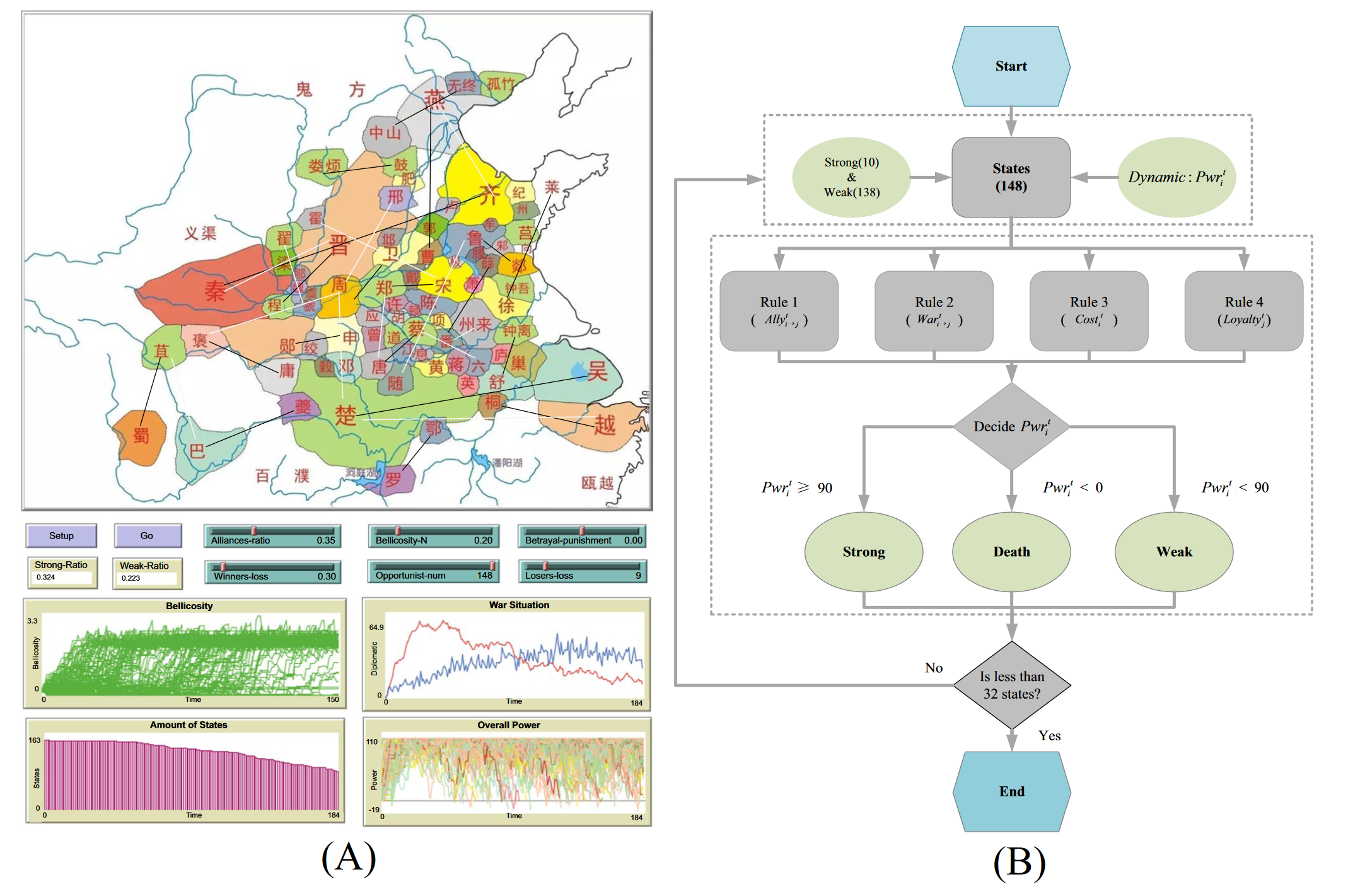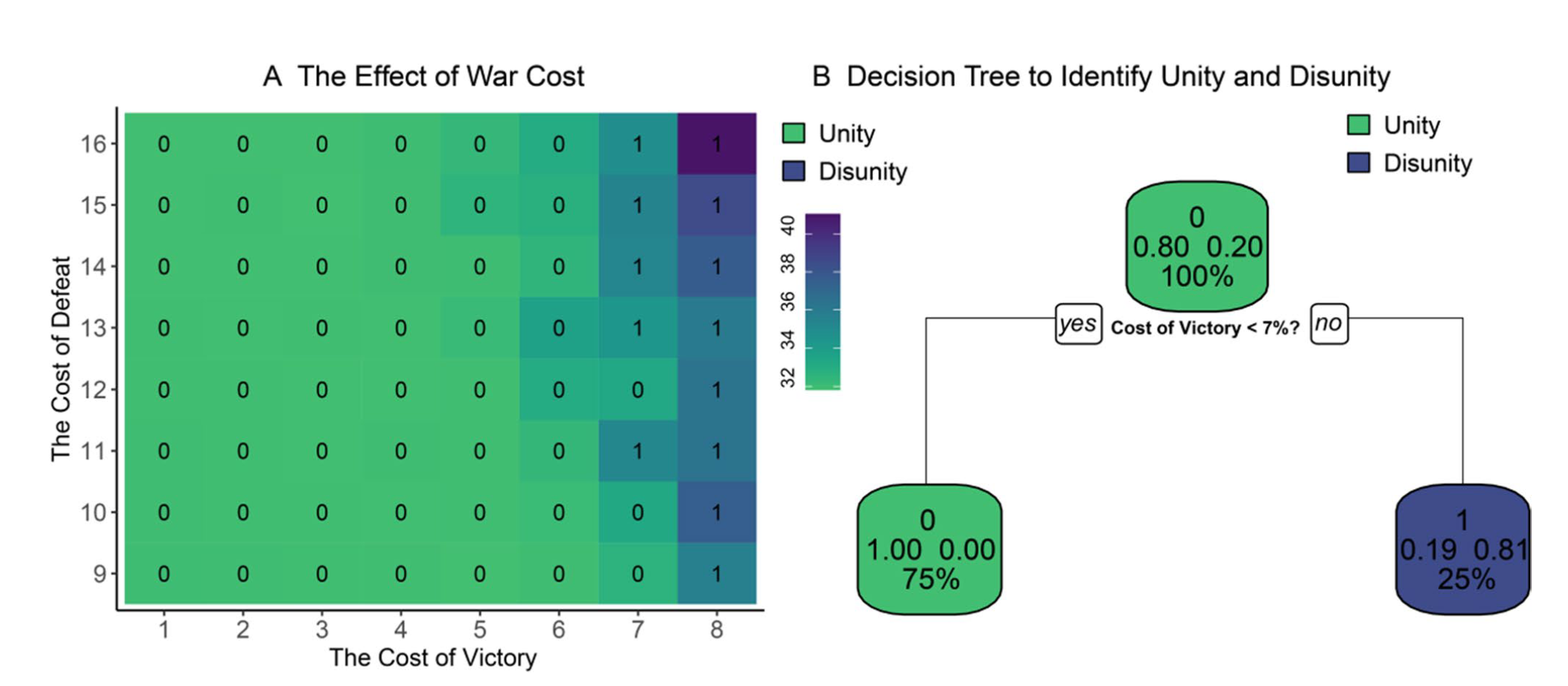Peng Lu and his colleague identify the unification conditions of human civilization patterns in ancient China using ABM
Recently, Prof. Peng Lu and his colleague publish a paper on AAS. In this paper, they use an agent-based model to identify the unification conditions of human civilization patterns in ancient China.

Abstract:The series of unified empires or dynasties in the history of China (221 BC–1912 AD) have shaped the unification pattern of Chinese culture. Therefore, the eastern civilization (China) can be deemed as a unified culture. In the geographical scope of China in East Asia, there is a stable and continuous history process of one-by-one unified dynasties (empires). Between two old and new unified dynasties in the history of China, there are always chaotic (transitional) periods when several local regimes competed for the absolute power of China (the Mandate of Heaven). In these transitional periods, wars and annexations are always inevitable. Then, only one local regime will succeed in gaining that power, forming a new unified dynasty (empire). The cultural pattern is obviously different in the western world, and there are no stable unification patterns. In Europe, there were also chaotic periods, with wars and annexations. However, there is no stable pattern of unification, which means that no local regimes (countries) have unified mainland Europe. Hence, whether this process can be modeled and revealed? We believe that computational methods can reveal some laws and rules of historical dynamics. For this work, we need to solve the conditions of both the unity and disunity. To achieve this goal: first, we build an agent-based model of general history dynamics for the chaotic periods; second, we run the simulations to explore outcomes of the unity and disunity; last, we obtain valid solutions for both the unity of China and the disunity of the West world. It suggests that our valid solutions explain the disunity between China and Europe patterns. Moreover, we can calculate the conditional boundaries of both unity (China) and disunity (Europe). Thus, the unification process in human history may be universal, but the outcomes or patterns may be different under different conditions.
Keywords: Agent-based model; History dynamics; Unity versus Disunity; Civilization patterns; China and Europe

Figure 1. The interface and logic of our model. Panel A indicates the model’s interface, including variables and different statistical plots. Panel B refers to the logic model and causal relationship between different variables. The dashed line represents two parts of the model, including the setup and running (Source: Lu (2022)).

Figure 8. The effect of war cost. Panel A shows the pattern outcomes under different combinations of winning cost (x-axis) and failure cost (y-axis). The numeric labels in the heat map are the number of surviving states. Panel B classifies the number of states by the Decision Tree, which indicates the validity of the classification. Each note box shows the predicted classification, the predicted probability of correct classification and misclassification, and the percentage of observations in the node.
2022年9月28日,国际人类学和考古学权威学术期刊《Archaeological and Anthropological Sciences》第14卷第205期在线发表吕鹏教授和合作者的研究论文“Unification conditions of human civilization patterns: based on multi-agent modeling of early Chinese history (770 BC to 476 BC)”。
该论文系统了回顾历史学、社会学和复杂性科学中关于中西方文明统一和分裂的相关研究,使用计算社会科学方法揭示历史动态的规律和动态,锚定了文明统一和分裂的条件。为了实现这一目标,论文首先建立了一个基于Agent的历史动力学模型来模拟国家的混乱时期;其次,通过模型模拟实验来探索统一和分裂的结果,得到了中国统一和西方世界分裂的边界条件有效数学解。该模型有效解解释了中国和欧洲之间的大一统和分裂的范式。由此表明,人类历史上的统一过程可能是相似的,但在不同条件下的结果模式或范式是不同的。
Citation:
Lu, P., Zhang, Z., Liu, C., & Li, M. (2022). Unification conditions of human civilization patterns: based on multi-agent modeling of early Chinese history (770 BC to 476 BC). Archaeological and Anthropological Sciences, 14(10), 205. https://link.springer.com/article/10.1007/s12520-022-01650-y